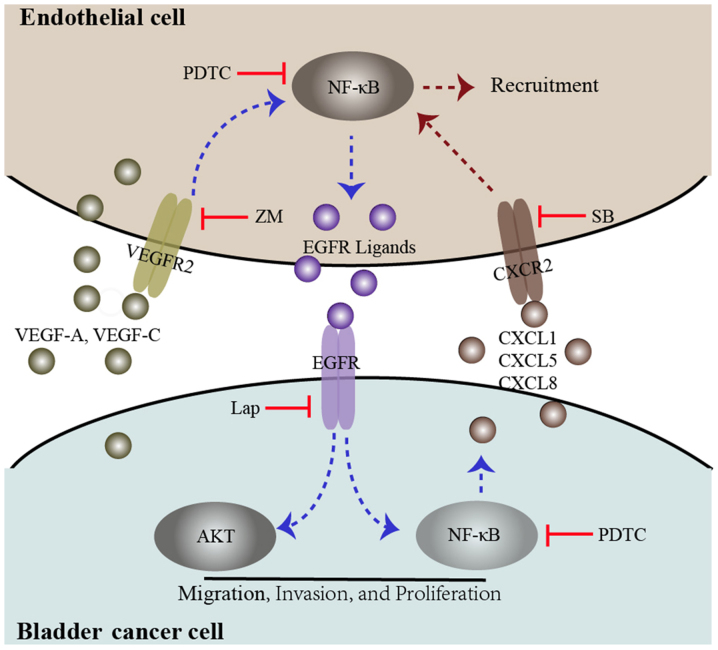Figure 6.
Diagram proposing a model for the interaction between bladder cancer cells and endothelial cells. In the co-culture system, both bladder cancer cells and endothelial cells secrete the VEGFR2 ligands VEGF-A and VEGF-C, which induce VEGFR2 signaling and downstream NF-κB signaling, promoting EGFR ligand expression. These events may be inhibited by a VEGFR2 inhibitor, ZM and an NF-κB inhibitor (PDTC). EGFR signaling in bladder cancer cells was triggered by EGFR ligands secreted by endothelial cells, which induces phosphorylation of AKT and NF-κB. These events enhance bladder cancer migration, invasion, and proliferation. Furthermore, activated EGFR signaling in bladder cancer cells could enhance endothelial cell recruitment through the upregulation of CXCL1, CXCL5 and CXCL8. These events could be inhibited by an EGFR inhibitor, lap, PDTC and a CXCR2 inhibitor, SB. VEGF, vascular endothelial growth factor; R, receptor; NF, nuclear factor; EGFR, epidermal growth factor receptor; ZM, ZM 323881 HCL; AKT, protein kinase B; lap, lapatinib; SB, SB225002.

